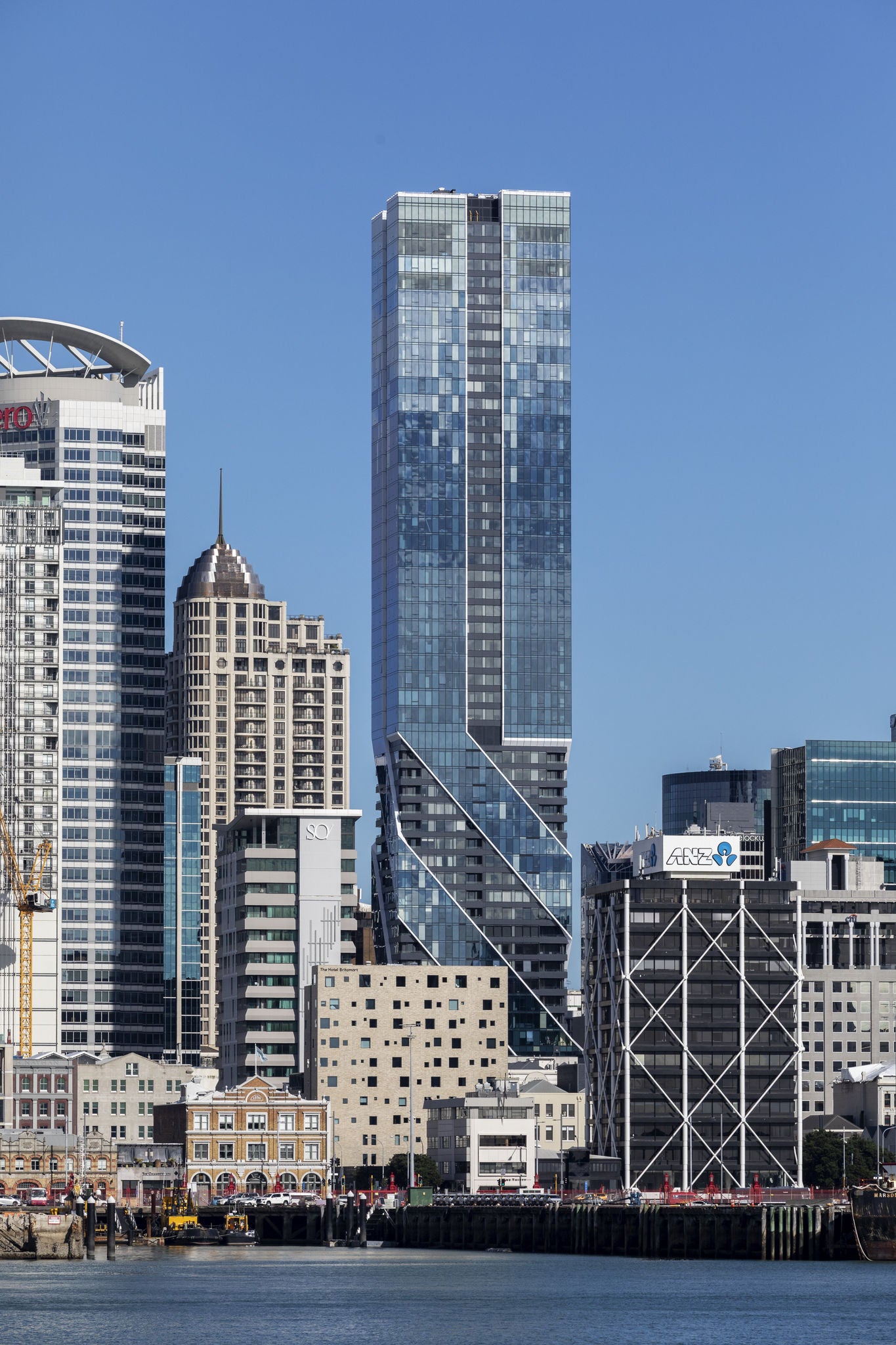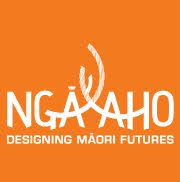The Auckland Urban Design Panel (AUDP) provides you with independent, best-practice advice so that your significant project contributes to better outcomes for Auckland. This section guides you through the AUDP process, providing you with information on who the current panel members are and celebrating the successes of the Panels and their applicants over the last twenty years.

The Pacifica seen from the Waitemata harbour.
For more than two decades, the Auckland Urban Design Panel (AUDP) has stood as a trusted voice for design quality in Tāmaki Makaurau. This tribute site honours the people, places, and projects that have helped shape a more liveable, inclusive, and distinctive city.
Established to provide independent, expert advice on urban design, the Panel brings together architects, landscape architects, urban designers, planners, property professionals and Māori design experts. Together, they offer a collective commitment to ensuring our built environment reflects the unique identity, heritage, and aspirations of this place.
Through rigorous peer review and genuine collaboration, the Panel has influenced hundreds of projects—from major civic infrastructure to neighbourhood housing and transformative regeneration. The work of the Panel is not just about reviewing plans; it’s about helping to shape a city that honours its whenua, tells its stories, and puts people at the heart of place.
This site is a tribute to the legacy of the AUDP, its enduring partnerships with others, and the many professionals who have offered their expertise in service of a better Tāmaki Makaurau.
Tāmaki Makaurau is a city shaped by fire and water—its volcanic cones (maunga) rising across the landscape, each with its own story, memory, and meaning. These maunga, including the revered Maungawhau (Mt Eden), are not just geographic features—they are ancestors, landmarks, and guardians of whakapapa.
The Auckland Urban Design Panel (AUDP) champions the embedding of these cultural narratives into the city’s built form. The Panel’s advocacy has ensured that design proposals honour and reflect the mauri of the maunga, giving these sacred places a visible presence in Auckland’s evolving urban fabric.
Once flowing openly along what is now Queen Street, Te Waihorotiu was a lifeline for local iwi, running from the ridgeline of Karangahape down to the Waitematā. Though it now flows beneath the city, its presence is remembered and reimagined in designs reviewed by the AUDP—bringing the stream’s legacy to life in subtle ways that respect the past and inspire the future.
From the union and separation of Ranginui and Papatūānuku to the emergence of Te Ao Mārama, Auckland’s story is deeply rooted in Māori cosmology. Through AUDP’s leadership, projects such as City Rail Link have embedded these pūrākau into the architectural expression of place. This is more than symbolism—it’s a commitment to a future that honours the past.
The success of transformational projects like the City Rail Link is in part due to the AUDP’s collaborative approach. By working closely with designers, mana whenua, and Council teams, the Panel has elevated outcomes through shared values and early engagement.
The Panel’s early input has helped streamline complex projects, reducing risk and providing clarity before applications are formally lodged—saving time and resources while lifting design quality.
The Panel has consistently championed the use of the Te Aranga Māori Design Principles, supporting their early adoption and ongoing application. This has ensured Māori values are carried through every layer of design—from strategy to detailing—and are reflected in both the process and outcomes.

A birds eye view of the Te Komititanga paving artwork at Commercial bay Waitemata station, one of the signature collaborations with AUDP.
Auckland is changing—and so too is the role of design. The AUDP has evolved to respond to growing urban pressures and intensification, including the creation of a dedicated Medium Density Residential Panel (MDRP) to guide higher-density housing. This ensures designs are not just permitted, but purposeful—responsive to both people and place.
The AUDP provides a space where urban designers, architects, landscape architects, planners, property professionals and Māori design experts come together to challenge, refine, and uplift design thinking. The result is a cross-pollination of ideas that benefits both the city and the professions that shape it.
As an impartial review body, the AUDP brings an independent voice to complex developments. Its multi-disciplinary lens and professional integrity provide developers and Council with trusted feedback that enhances both outcomes and public confidence.
This rigorous process ensures projects uphold design excellence, reflect community values, and align with the aspirations of Auckland Council’s plans and strategies.
The AUDP has played a pivotal role in supporting Auckland Council’s urban regeneration efforts—ensuring that redevelopments like the Northcote Neighbourhood and Kōtuitui Terraces reflect high-quality design, celebrate identity, and foster community wellbeing.
These reviews have reinforced design excellence as a public good—lifting the quality of life in growing neighbourhoods.
Nga Aho plays a vital role within the AUDP, bringing cultural expertise that ensures Māori perspectives and values are woven into the fabric of Auckland’s design future. Their involvement fosters deep engagement with iwi and hapū, helping shape projects that honour ancestral connections and reflect the richness of te ao Māori.
Through this approach, the Panel champions Auckland Council’s vision for a city that is inclusive, equitable, and proudly grounded in Māori identity - creating places that tell stories, strengthen belonging, and inspire generations to come.

A render of the reed ceiling of Te Waihorotiu station during the collaboration between CRL and AUDP.

The Auckland Urban Design Panel (AUDP) held its first meeting on 01 April 2003, and carried out its first project review on 14 April 2003. The project reviewed was fittingly a waterfront project: the re-use of Halsey Street wharf and reclamation for a proposed Viaduct Harbour events facility. At that time the area was part of the Americas Cup village but has since become home to the Viaduct Events Centre. Auckland City Council was the applicant, represented by John Duthie and Mark Vinall. Mathew Twose (City Planning section of ACC) authored the briefing document for the Panel, which asked the Panel “to recommend a set of urban design guidelines or principles that could assist in guiding the future use and development of this area as an events area or marine stadium”.
The inaugural panel comprised Gordon Moller and Diane Brand (NZIA affiliation), Doug Leighton (NZILA affiliation), Paul Phillips and Mark Townsend (NZ Property Council affiliation). The panel was chaired by John Hunt.
In the early years of its operation panel sessions were held in the VIP rooms of the Town Hall, which added a certain sense of occasion to the proceedings. While there was a marked resistance from developers and their design consultants to present to the panel in the early period of its operation, this gradually shifted, subsequently requiring a second panel to operate as well. Over time, with increasing depth of urban design expertise within the City Council, a single panel, meeting weekly but sometimes reviewing more than one project per session, became the norm.
Notes prepared by John Hunt, 28 March 2023
Any large development within or near a centre;
Any development within the City Centre;
High rise apartment buildings, office buildings or large mixed use developments;
Large scale residential developments over 20 units;
Major infrastructure projects such as motorways or schools;
Masterplans for any new greenfield or brownfield development;
Any locally significant development that council officers believe would benefit from a Panel review;
Developments that infringe the standards in the Unitary Plan;
Major scale Council and CCO projects including streetscape upgrades and community facilities.

Book a meeting
Our planning team will contact you to set up a pre-application meeting.
Our planner will invite any relevant council specialists to the meeting.
Attend meeting
At the pre-application meeting a Council Urban Designer will check the proposal against the triggers to see if an AUDP review is required.
Confirmation
Shortly after the meeting, we will email you to let you know whether your proposal will go to the AUDP.
The Council urban designer will check with the Panel Assistant to select possible dates for the Panel session. The Panel date will be confirmed with the applicant. Panel sessions are held weekly, usually on Thursday.
The Design Review Panels Lead will work with the Council urban designer to identify the appropriate mix of Panel Members, including whether a Ngā Aho representative or Heritage Architect is required.
They will also determine whether additional experts or Council officers are required to advise the Panel.
The Panel Assistant will send an invitation to the selected Panel members, the applicant, the Council urban designer and planner, and any additional experts or Council officers.
Milestones for information requirements
You’ll get a follow-up email and calendar invitation with dates, timeframes and requirements for submitting the Panel Information Requirements.
Two weeks prior: draft information requirements
Submit your draft information requirements pack to your Council Urban Designer via email. They’ll tell you if there’s any additional information required for the final Information Requirements pack.
One week prior: final information requirements
Send your final information requirements pack in hard copy by Thursday at midday, a week prior to the AUDP meeting.
Send the pack to:
Tāmaki Makaurau Design Ope
Auckland Council
Level 16
135 Albert St
Auckland Central 1010
Attn: Auckland Urban Design Panel Assistant
Note: The panel meeting will be postponed if the above criteria are not met.
Once the final Information Requirements have been received, the Council planner and urban designer will jointly prepare a coversheet and any relevant supporting material to highlight the key urban design issues that they are seeking advice from the Panel on.
The Information Requirements, Coversheet and supporting material is collated and sent out by the Panel Assistant to Panel members.
You will meet with your Council Planner, Urban Designer and Panel Assistant, panel members and any additional experts or Council officers. Meetings are held in Auckland Council offices in the city centre. Panel sessions run on a tight schedule:
The Panel Assistant is responsible for circulating the recommendations to Council staff and the applicant within 24 hours of the close of the meeting.
In instances where the Panel is unable to complete the recommendations within the scheduled meeting time, draft recommendations will be emailed to all Panel members. Any suggested changes will be sent in a ‘reply to all Panel Members’ email, with the Chair responsible for providing the final recommendations to the Panel Assistant within 3 days.
Our team will contact you to discuss the panel's list of recommendations or ask for clarification on points raised during the meeting. Depending on which stage of the design process you are at and the recommendations themselves, the panel may ask to review the proposal again. We encourage you to meet with us once again after applying the recommendations and before lodging your application for resource consent.
Our diverse urban design panel members each have extensive experience in their respective fields. Find out more about them in this list of panel member bios.
Here are examples of the milestone projects shaped by AUDP and their applicants over the last twenty years.

“Back in 2014 Auckland Council published the book ‘Inter-View: The contribution of urban design panels to Auckland’s urban story’ to celebrate the work of Auckland Design Panels from 2004 to 2014. Ten years on, this tribute celebrates the journey 2014 to 2024.
Raising the design quality bar for Auckland Tāmaki Makaurau takes a collaborative and multi-disciplinary approach. This is enabled by our highly skilled and dedicated panel members and the partnering institutes that nominate them. It also takes Council specialists and planning teams working day to day with developers and their design teams, bringing forward projects that need a friendly critique. It’s also about making sure the panel direction, day-to-day experience, and processes are fit for purpose. This is where the panel governance board and the panel secretariat come in to make sure the panel are set up for success.
The projects in this tribute, share the journey over the last ten years, documenting some key transformational projects such as City Rail Link, Northcote Neighbourhood and the Tāmaki Regeneration as well as the challenges brought by housing intensification. Good design is no longer a nice-to-have but fundamental to economic, social, cultural, and environmental success. Auckland Urban Design Panel plays a critical role, bringing people and projects together, to seek better outcomes.
Thank you to all Auckland Urban Design Panel members past and present, and everyone involved in making this tribute happen, and sharing your mahi so generously. Here’s to the next ten years and keep inspiring the city to do better!”
"Design reviews are key to shaping better civic, social and economic outcomes for a city and its residents. AUDP enables this greater urban perspective by bringing architects and other experts together with developers at key stages of a project’s design development. Wider public benefits and potential can be discussed and included, so together we shape a city that is not only more liveable and resilient for residents, but also properly reflects and embeds mana whenua values - all raising Tāmaki Makaurau Auckland’s profile as a great city in Asia Pacific."

"The New Zealand Planning Institute (NZPI) proudly supports the Auckland Urban Design Panel (AUDP) as a critical initiative for advancing the quality of Tāmaki Makaurau’s built environment. Since its establishment, the AUDP has demonstrated the importance of fostering collaboration across disciplines to ensure that urban development in Auckland reflects both high-quality design and robust planning principles. Planners play a vital role in this process, contributing expertise that balances the social, environmental, and economic dimensions of urban projects. The Panel's multidisciplinary approach—bringing together developers, architects, engineers, landscape architects, and planners—ensures that each project benefits from comprehensive and thoughtful evaluation.
NZPI members have been privileged to contribute to the AUDP, championing a future-focused, sustainable, and equitable urban development framework. By facilitating early, independent advice, the Panel supports well-considered outcomes that align with the aspirations of Auckland’s communities and the strategic goals of the region. As the AUDP celebrates 20 years of impactful work, NZPI commends its commitment to driving innovation and raising the bar for urban design excellence in Tamaki Makaurau."

“Property Council New Zealand has been an early supporter of the Auckland Urban Design Panel as an important measure to help improve Tamaki Makaurau’s built environment. The Urban Design Panel’s independent and pre-application advice helps drive its mission to improve building design quality across Tamaki Makaurau. The key to its success, is having a range of property industry professionals such as; developers, designers, engineers, and planners, to ensure that a coordinated and whole-of-system approach can be taken to each project.
This holistic approach ensures that a projects feasibility, technical aspects, and good urban design can be considered together. Property Council New Zealand members have been an integral part of the Auckland Urban Design Panel over the years, using their expertise to contribute to Auckland’s past, present and future built environment which helps to create places where communities can thrive..”

"Tuia Pito Ora, The New Zealand Institute of Landscape Architects (NZILA) endorses the Auckland Urban Design Panel as an important initiative aimed at enhancing the landscape of Tamaki Makaurau. NZILA members have played a pivotal role within the Auckland Urban Design Panel since its inception, utilising their expertise to influence the present, and future landscapes of Tamaki Makaurau.
The effectiveness of the panel lies in the collaboration of diverse industry professionals—developers, architects, landscape architects, urban designers, and planners. This collaborative approach ensures a holistic perspective on each project, allowing for the consideration of project feasibility, technical intricacies, and design aspects."

"Tēnā koutou katoa, on behalf of Ngā Aho, the national network of Māori design professionals, we extend our warmest congratulations to the Auckland Urban Design Panel (AUDP) on the occasion of its 20th anniversary.
Since its inception, the AUDP has played a pivotal role in shaping the urban landscape of Auckland, ensuring that design excellence and sustainability are at the forefront of the city's development.
Ngā Aho has been privileged to contribute to the AUDP, offering perspectives that weave Māori aspirations and mana enhancement into the fabric of our urban environment. Our collaboration is a testament to the AUDP's commitment to inclusivity and respect for the unique cultural heritage of Tāmaki Makaurau.
As we celebrate this milestone, we look forward with enthusiasm to the continuation of our partnership. The next 20 years present an opportunity to deepen our whakawhanaungatanga (relationship building), grounded in aroha (sincerity), tika (doing what is right), and pono (integrity). It is through these values that we will collectively contribute to a future where the urban design of Auckland reflects the rich diversity of its people and the natural beauty of its landscapes.
Ngā Aho is committed to continuing our engagement with the AUDP, ensuring that Māori perspectives and values are interwoven into the growth and transformation of Auckland.
Together, we can achieve a city that not only excels in urban design but also embodies the principles of sustainability, cultural respect and social equity. Here's to the next 20 years of collaboration, innovation and te haerenga whakamua (into the future)."